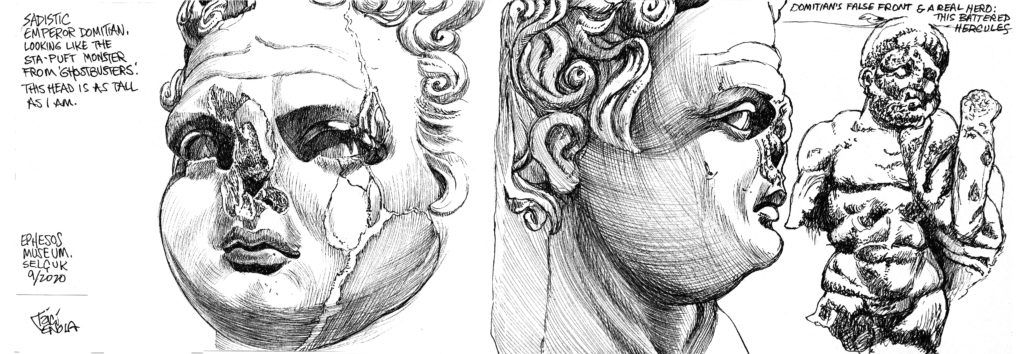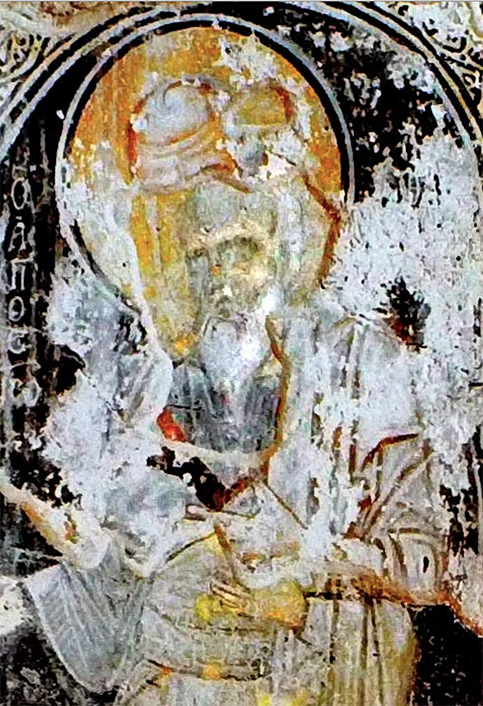ST JOHN’S EPOCH Emperor Domitian exiled John to the Isle of Patmos, where he wrote Revelation, also known as The Apocalypse. Here are pieces of a giant statue of Domitian in the Selchuk Museum, the monstrous baby face reminiscent of the horrifying behemoth Sta-Puft Marshmallow Man in Ghostbusters.

After Domitian’s demise John was pardoned and returned to Ephesus, where he lived out the rest of his days. Now the town of Selchuck is modern, built since the late nineteenth century around a surviving section of Roman Aqueduct at the Ephesus railway stop. Its main attractions in old days were the Temple of Artemis, and the Citadel. John must have lived there, in cave or house or hut, writing his Gospel up there, howling out the Word in the wind and rain, the searing sun.

He wanted to remain near the Citadel, and he did. Every other Apostle was martyred, but John was said to have “gone into the cave of his church” and vanished. Now of all the saints, John is the one with no relics anywhere. When Constantine, in the 4th century, opened his supposed tomb, there was nothing but air.